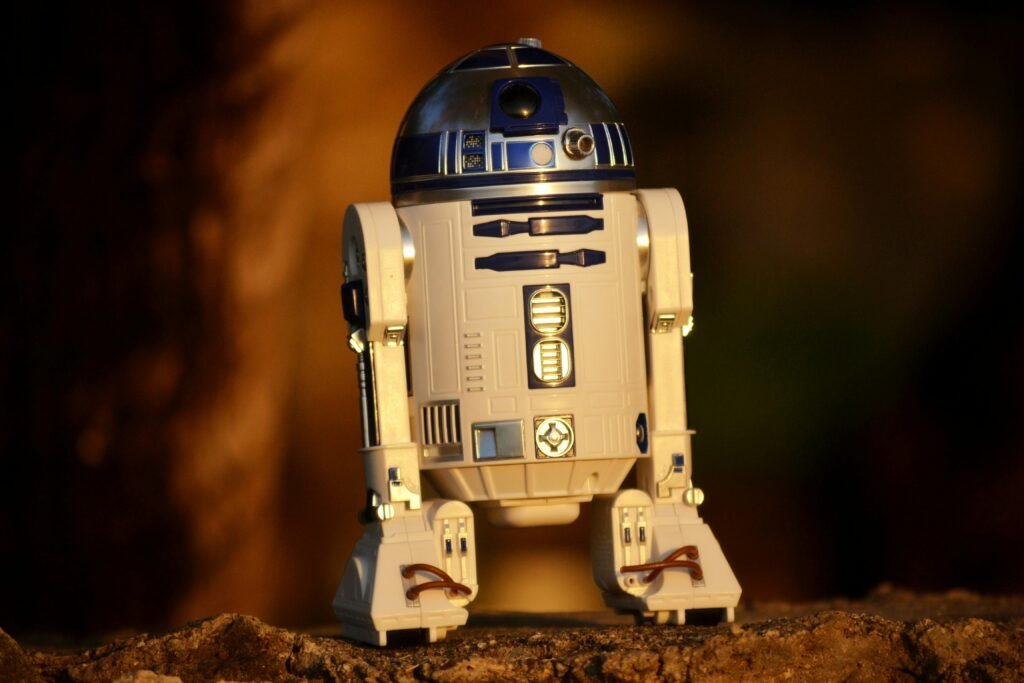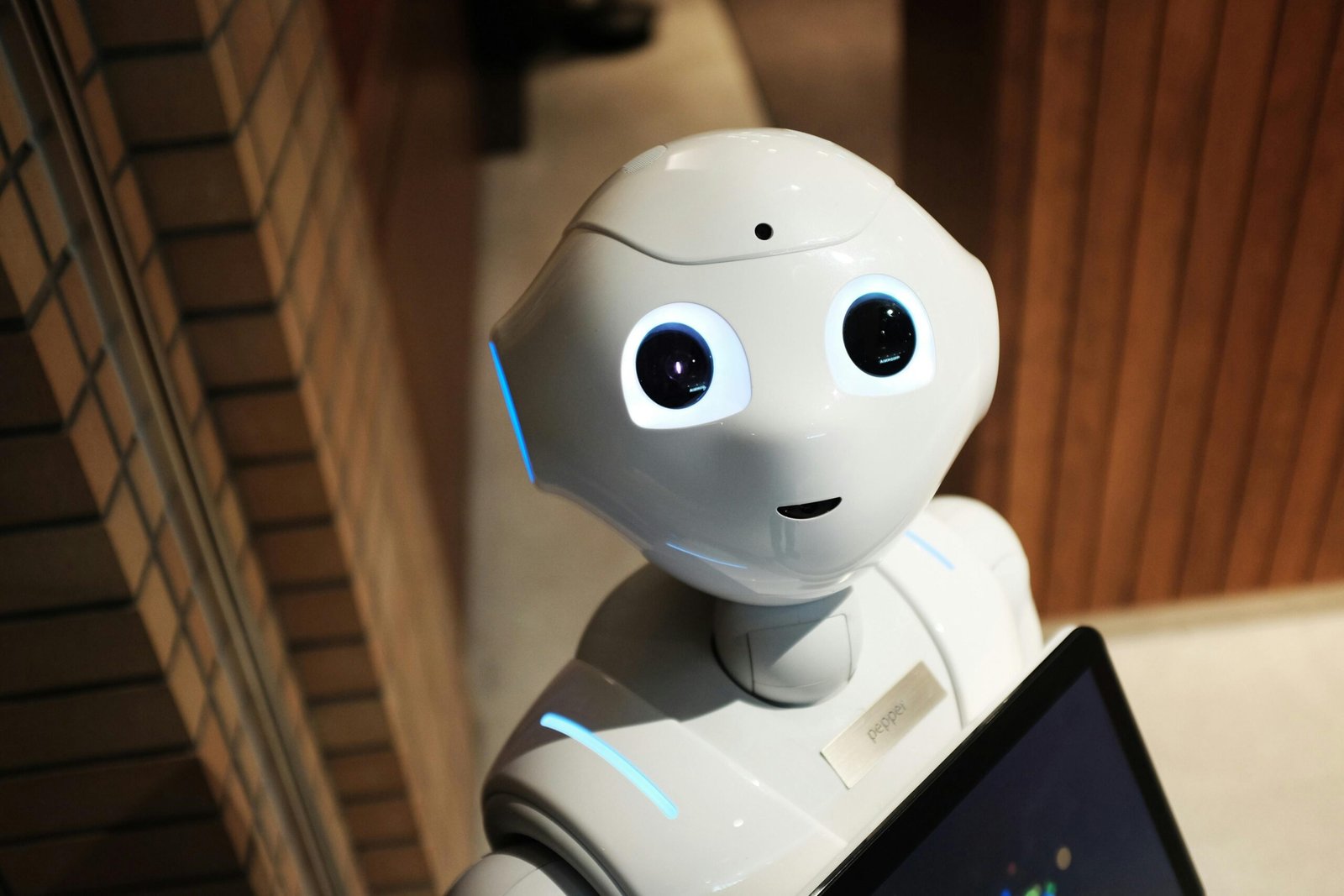Introduction: Ushering in the AI Revolution in Robotics
The convergence of Artificial Intelligence (AI) and robotics marks a pivotal moment, unleashing an AI revolution that is fundamentally reshaping industries and daily life. This synergy empowers machines to perceive, learn, reason, and adapt, expanding their utility. This report explores the latest innovations driving this transformative period, covering core concepts, breakthroughs, product applications, contributions from Boston Dynamics, and the US AI robotics landscape.

Defining the AI Revolution in Robotics
1. Core Concepts of AI in Robotics
AI in robotics integrates machine learning (ML) algorithms and hardware, enabling robots to learn and make autonomous decisions. This multidisciplinary field combines computer science, engineering, and data science. Unlike early robots with predefined commands, today's AI-powered robots retrieve data, learn from experiences, and make decisions, enhancing versatility. ML allows robots to learn from data, encompassing supervised, unsupervised, and reinforcement learning. Deep Learning, a type of ML, uses neural networks for advanced functions like object and speech recognition, and natural language processing. AI-powered computer vision is fundamental, enabling robots to recognize and manipulate objects precisely.

2. Significance of AI Advancements in Robotics
AI brings intelligence and adaptability to robots, leading to enhanced capabilities, increased efficiency, improved safety, and the ability to execute complex tasks previously impossible through direct coding. This profound shift signifies a true AI revolution in how automated systems are conceived and deployed. The transition from rigidly programmed robots to adaptive, decision-making machines represents a fundamental paradigm shift, unlocking applications in dynamic settings like search and rescue, healthcare, and flexible manufacturing. This transformation redefines what robots can achieve, accelerating the AI revolution.
Cutting-Edge Innovations Driving the AI Revolution (2024-2025)
The period of 2024-2025 is witnessing remarkable breakthroughs accelerating the AI revolution in robotics.
Key Technological Breakthroughs
- Real-Time Adaptation and Improved Connectivity: AI enables robots to respond dynamically to environmental changes and facilitates seamless human-robot interaction, allowing real-time learning and improvement.
- Mobile Manipulators: Combining mobile platforms with manipulator arms, these robots transport and handle objects in dynamic industrial environments, improving operational efficiency.
- Digital Twin Technology: Virtual replicas of robotic systems enable real-time analysis and optimization without physical risks, allowing simulated testing and predictive maintenance.
- Humanoid Robots: Humanoids are gaining traction for versatile applications in social, healthcare, and industrial tasks, with customizable AI capabilities for adaptability.
- Sustainable Robotics and Energy Efficiency: Robots are designed with eco-friendly materials and energy-efficient systems, reducing material waste and aiding green energy technology production. Innovations include lightweight components and bionic gripper technology.
- Analytical, Physical, and Generative AI: Analytical AI processes sensor data for optimization. Physical AI involves hardware and software simulating real-world environments for virtual training. Generative AI aims to advance this simulation technology, creating a “ChatGPT moment” for Physical AI.

Significant investment in “Physical AI” and “Generative AI” for robotics simulation indicates a strategic shift towards virtual training environments. This approach dramatically reduces development cycles and costs, making advanced AI robotics more accessible and accelerating the pace of innovation. This virtual training paradigm is a critical enabler for the rapid advancements observed in the current AI revolution.
Table 1: Key AI Robotics Innovations (2024-2025)
| Innovation | Description | Impact on Robotics |
| Real-Time Adaptation & Connectivity | AI enables dynamic response to environmental changes and seamless human-robot interaction. | Enhanced functionality in unpredictable settings; improved human-robot collaboration. |
| Mobile Manipulators | Combination of mobile platforms with manipulator arms. | Versatile handling and transport in dynamic industrial environments; increased operational efficiency. |
| Digital Twin Technology | Virtual replicas of robotic systems for real-time analysis and optimization. | Simulated testing for failure identification; performance optimization; predictive maintenance. |
| Humanoid Robots | Human-shaped robots with customizable AI capabilities. | Versatile applications in healthcare, social care, and hazardous industrial tasks. |
| Sustainable Robotics & Energy Efficiency | Design with eco-friendly materials and energy-efficient systems. | Reduced material waste; cost-effective production of green energy tech; lower operational energy consumption. |
| Physical/Generative AI | Robots train in virtual environments to learn from experience; aims for “ChatGPT moments” in physical AI. | Accelerated development cycles; reduced training costs; rapid iteration of AI policies. |
AI Robotics Products and Diverse Applications
The practical manifestations of the AI revolution are evident in a rapidly expanding array of AI robotics products transforming numerous industries.

Real-world Applications across Various Industries
- Industrial Manufacturing, Aerospace, and Telecommunications: AI-powered robotics platforms automate complex tasks, improving efficiency and safety, leading to higher production rates and reduced waste.
- Healthcare: AI in robotics revolutionizes patient care and back-office operations. Robots assist in surgery, provide personalized support, and automate routine tasks.
- Hazardous Environments: AI and robotics are crucial for tasks in high-risk settings like nuclear power stations, offering faster reflexes and greater dexterity than remote human control.
- Logistics Operations: AI and robotics transform the supply chain into a highly efficient, transparent, and flexible ecosystem through intelligent warehousing and autonomous delivery.
- Retail Stocking and Service Work: AI-controlled robots optimize retail operations from warehouses to store shelves, streamlining processes and increasing efficiency.
- Agriculture (Precision Farming): AI and robotics transform agriculture by optimizing irrigation, soil health, and pest control. Robots automate planting, weeding, and harvesting, enhancing labor productivity.
- Safety and Emergency Response: AI can detect threats, and robotics can actively intervene, deploying medical aid or taking protective actions before human responders arrive.
- Fintech Industry: AI analyzes financial data to predict market trends, detect fraud, and personalize customer services. Robotics streamlines operations like loan processing and wealth management.
The pervasive application of AI robotics across such a wide array of industries suggests that the AI revolution is not merely an industrial phenomenon but a cross-sectoral force fundamentally altering how diverse industries operate.
Table 2: AI Robotics Applications by Industry
| Industry | Specific AI Robotics Application | Key Benefit |
| Industrial Manufacturing | Predictive maintenance, quality control, assembly automation. | Higher production rates, reduced waste, improved product quality. |
| Healthcare | Robotic surgery, patient care, diagnostics, drug formulation. | Improved accuracy, enhanced patient care, increased efficiency. |
| Hazardous Environments | Autonomous inspection, remote manipulation, emergency response. | Enhanced safety, faster reflexes, greater dexterity in unsafe areas. |
| Logistics Operations | Intelligent warehousing, real-time tracking, autonomous delivery. | Streamlined operations, reduced costs, improved customer satisfaction. |
| Retail | Automated stocking, service work, fully automated stores. | Optimized operations, increased efficiency, faster service. |
| Agriculture | Precision farming (irrigation, pest control), automated harvesting. | Optimized resource use, increased productivity, sustainable farming. |
| Safety & Emergency Response | Threat detection, active intervention, medical aid deployment. | Safer public environments, rapid response, protective actions. |
| Fintech | Fraud detection, market trend prediction, loan processing. | Reduced human error, increased efficiency, enhanced decision-making. |
Leading the Charge: Boston Dynamics and the US AI Robotics Landscape
The United States is a significant hub in the AI revolution in robotics, with key players driving innovation.
Boston Dynamics Robotics AI Capabilities
Boston Dynamics, a global leader in mobile robotics, is expanding its collaboration with NVIDIA to accelerate AI capabilities in its humanoid robots. Their Atlas robot leverages the NVIDIA Isaac GR00T platform and Jetson Thor computing platform for complex, multimodal AI models. Developers are making rapid breakthroughs in learned dexterity and locomotion AI policies using Isaac Lab, an open-source framework for robot learning in physically accurate virtual environments. This collaboration extends to defining functional safety and security architectures. Boston Dynamics also introduces new AI capabilities for its quadruped robot Spot, improving locomotion and hazard avoidance.
Boston Dynamics' deep collaboration with NVIDIA on specialized AI platforms and simulation environments signifies a critical trend towards integrated hardware-software ecosystems tailored for AI robotics, accelerating the AI revolution in physically embodied intelligence.

Overview of the US AI Robotics Industry
The U.S. automotive robotics industry is projected for substantial growth, reaching US$8.28 billion by 2033 with a CAGR of 10.74% from 2025. This growth is fueled by automation advancements, AI-enhanced robotics adoption, and the need for precision manufacturing. U.S. manufacturers integrate AI and machine learning for predictive maintenance and workflow optimization. NVIDIA's CosmosT platform (Jan 2025) exemplifies this. The shift towards electric vehicles (EVs) also necessitates investment in advanced robotics. Key players include Rapyuta Robotics Inc., FANUC America, and OMRON Automation Americas. The U.S. government's strategic focus on AI and robotics through initiatives like the National Science Foundation's (NSF) Directorate for Technology, Innovation and Partnerships (TIP) highlights a national recognition of the AI revolution as a geopolitical and economic imperative. This initiative aims to accelerate key technologies, solidifying the U.S.'s position.
Future Outlook and Research Directions in the AI Revolution
The trajectory of the AI revolution in robotics points towards increasingly sophisticated systems and critical societal considerations.
Emerging Research Trends
- Human-Robot Collaboration (HRC): Future research focuses on seamless human-robot collaboration, designing robots that understand and respond to human needs through advanced AI, including emotion and speech recognition. The goal is to free humans for creative tasks while robots handle repetitive or hazardous ones.
- Advanced AI in Healthcare Robotics: Research focuses on improving accuracy and precision in surgical procedures, enhancing personalized patient care, and increasing efficiency by automating routine tasks. This requires rigorous testing and robust safety features.
Societal Implications and Ethical Considerations
The AI revolution in robotics brings profound societal changes.
- Job Displacement and Workforce Transformation: AI and automation may displace jobs in low-skilled, repetitive sectors. Projections suggest hundreds of millions of jobs could be displaced globally by 2030. However, new jobs requiring new skills are also expected, necessitating reskilling and adaptation.
- Bias and Discrimination in AI Systems: AI systems can perpetuate prejudices if trained on biased data, leading to unfair outcomes. Mitigation strategies include diverse datasets, regular audits, and ethical AI guidelines.
- Transparency and Accountability: Many AI systems operate as “black boxes,” making decision-making opaque. Establishing accountability for AI-driven decisions is complex. Research focuses on Explainable AI (XAI) to make systems understandable.
- Public Trust: Building public trust is vital. Unethical practices can erode trust, leading to rejection and reputational damage. Transparent and unbiased systems are crucial for fostering trust and acceptance.
Conclusion: The Enduring Impact of the AI Revolution
The ongoing AI revolution in robotics represents a profound paradigm shift. From redefining industrial manufacturing to revolutionizing healthcare and agriculture, AI advancements in robotics unlock unprecedented efficiencies and capabilities. Innovations, from advanced AI models and digital twins to humanoids and energy-efficient designs, underscore a future where robots are increasingly integrated into society. The leadership of Boston Dynamics and strategic US investments solidify this trajectory. While the AI revolution promises immense benefits, it also necessitates addressing critical societal implications, particularly job displacement, algorithmic bias, and the imperative for transparency and public trust. Navigating these challenges responsibly will be key to harnessing the full potential of this transformative era, ensuring a more productive, safer, and equitable future for all.








